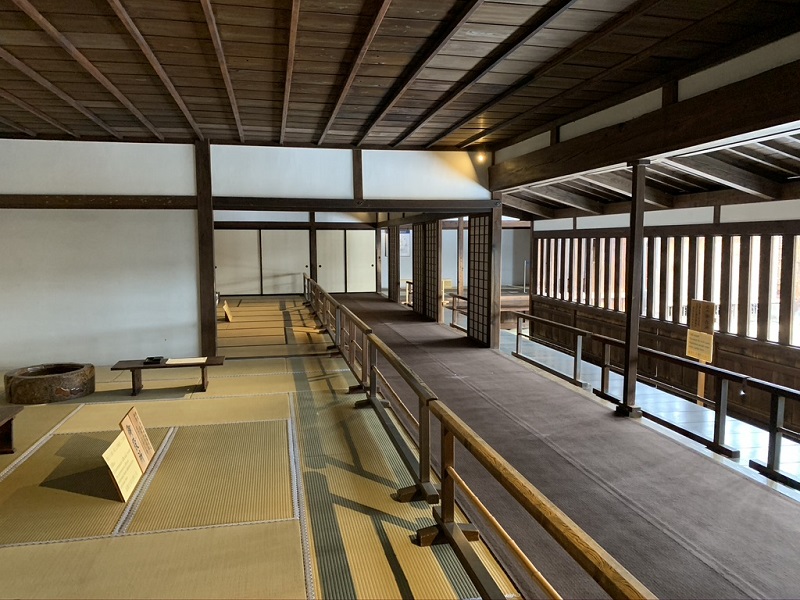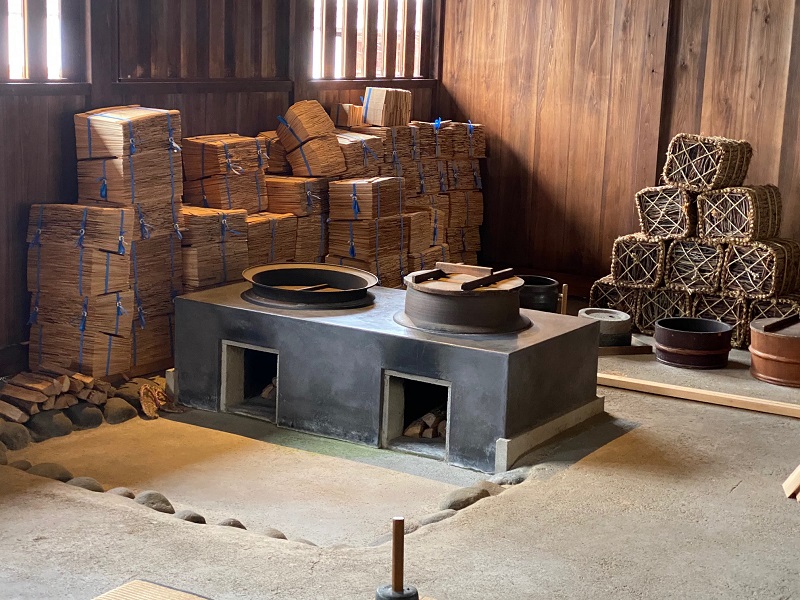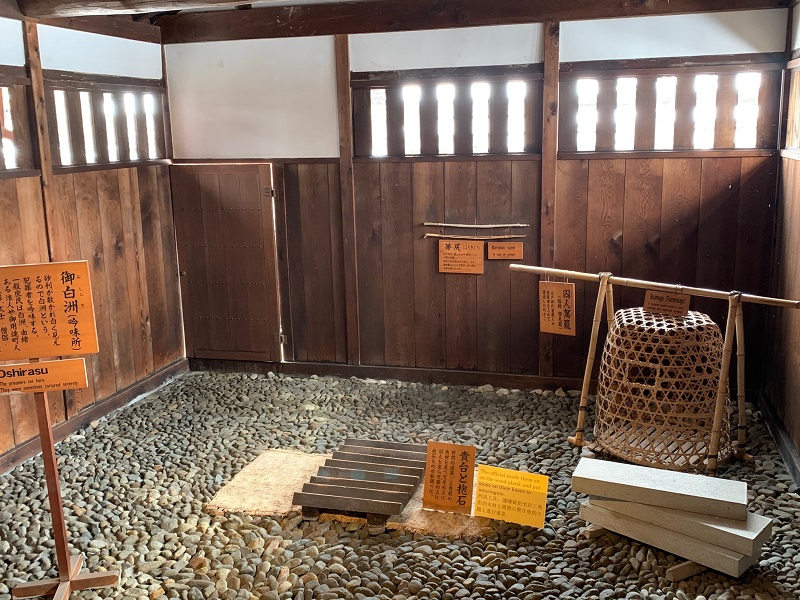If you are going to Takayama, Takayama Jinya makes for an interesting historical stop on your itinerary. Takayama Jinya’s building served as the governor’s house and also as a regional office for the Tokugawa shogunate. It is classified as a National Historic Site of Japan, and is the only one of its kind to have survived in all of Japan! Find out what you can see in this traditional Japanese building.

History of Takayama Jinya
Initially, Takayama Jinya’s building was constructed in 1615 as the residence of the then lord of Hida, Kanamori. In 1692, Hida Province, which capital was Takayama, came under the direct control of the Tokugawa Shogunal Government. From that date, the governor of Hida was appointed by the Shogun. Takayama Jinya Building then became the seat of Hida’s government between 1692 and 1868.
The Tokugawa government directly controlled 60 provinces including Hida Province. For about 180 years, 25 generations of administrators were sent to Takayama of Edo (the old name of Tokyo). This building served as a court, for tax collection, and as a prison. At the back of this building, there is also a private part of the governor’s office.
The present building was rebuilt in 1816. Finally in 1867, the Tokugawa shogunal government gave back its power to the Emperor and the building came under the control of Hida prefecture. It remained as Hida’s administrative office until 1969.
Takayama Jinya Points of Interest : Administrative Part
The Entrance Hall (玄関之間) dates from 1816 and was used as the entrance reserved for high-ranking samurai to visit the administrative office. An interesting point is that the the entrance board is placed quite low in relation to the other entrances. This facilitated the entry of high-ranking samurai coming to Kago. They used a kind of sedan chair which was a widely-used means of transportation during the Edo period.
On the wall of the hall, we can notice the Sei-gai-ha (青海波) pattern, literally the waves of the blue sea: it was the favorite pattern of the Tokugawa family. The waves never stop, so it was the symbol of family prosperity.
After the Entrance Hall you can find 2 rooms that were used for offices. These offices were clearly separated according to status. The first room, called Oyakusho (御役所) was for government representatives. Goyoba (御用場) is the second room, for local representatives. We can see this difference in use according to status by the tatami border patterns. The border of Oyakusho is decorated, and the border of Goyoba is without a pattern.
The part just in front of 2 offices was used for the court of justice (interrogation room) reserved for civil cases (there is another room for criminal cases).
Office Support

Each post had its own office: in Takayama Jinya we have the temple room (寺院詰所), the room of the village representatives (町年寄詰所), and the room of the village administrators (町組頭詰所). After the banning of Christianity in 1612, the Japanese were obliged to convert to Buddhism and to register with the temples closest to their homes.
The monks had a list of the registered inhabitants of their temple, and it was the temple that issued a kind of certificate of residence at the time. During the Edo period, in order to leave their prefectures, one had to ask a monk to issue a kind of passport. So the monks handled administrative matters, which is why they had their own room at Takayama Jinya. Each room had its own entrance.
Takayama Jinya has several kitchens, and each kitchen had its own function. In the kitchen which is right next to the offices, simple meals were cooked and tea was prepared for the people who worked in the offices. In the fireplace dug into the ground, water was heated to serve tea. To bring the kettle close to the fire, they used to set the kettle on the stove with a tilted fish.
The bamboo that hangs the kettle has only 5 knots, an odd number because if the bamboo had 4 knots the even number can be divided. This can mean the cutting of prosperity. So in all the kitchens of Takayama Jinya, we find only bamboos with odd-numbered knots in the hearth dug in the ground. As the maids had no high rank, there is no border on the tatami.
Meaning of the Rabbit-shaped Objects
In most of Takayama Jinya’s halls, we can find rabbit-shaped nail covers. They are called Mamuki-Usagi (真向き菟, literally rabbit looking straight ahead) with big ears. There are several symbolic meanings behind the rabbit shapes in the Jinya:
-Rabbits were considered the protective deity of fire. Since Takayama Jinya’s building is made entirely of wood, the choice of the rabbit is understandable.
-Rabbits have big ears, which means that to govern well, one must listen to the people.
-The big ears of the rabbit symbolize that there is always someone next to you who listens to your whispers. This means that you must not lie or gossip.
VIP Areas

The Conference Room (大広間) is the largest room at Takayama Jinya. It comprises of 3 rooms that can be separated by partition walls, Fusuma. It was used for official conferences. The circular position of the tatami shows that during the conference all opinions were welcome to have active verbal exchanges.
The Courtyard of Justice (御白洲) was used to investigate criminal cases, and objects for torture are on display here. If you were found guilty, you were put in a kind of cage (see photo) and transported to Edo (Tokyo). Behind the administration building was the dwelling for the prefect.
The private part of the prefect was well separated from the administrative part with different entrances, kitchens, toilets, rooms, etc. Each room is smaller than the administrative rooms to be able to spend a convivial moment. From all the rooms of the prefect, there is a beautiful view on the garden.
The Servants’ Quarters
At the back of the prefect’s house are the kitchens and the servants’ room. There are 2 kitchens, one for the prefect’s family and the other for the servants and maids. The stoves for the prefect’s family are placed inside the kitchen, that is the part where you walk without shoes. Those for the servants and maidservants were placed directly on the floor.
Of course, the family of the prefect did not cook, but their food was not cooked on the floor. In the kitchen, the dishes that were used for the family are on display. The servants’ room is the only room where there is no shutter or shoji to cut the sun’s early rays, this helped the servants wake up with the sunrise.
Your Japan Tour
As seasoned Japan experts, we create perfect Japan package tours including historical destinations like Takayama Jinya. Check out our group tours and private tours, or contact us to start planning your unforgettable holiday to this fascinating country full of once-in-a-lifetime experiences, culture, history, nature, and delicious food!
Access Information
Access: 10 min walk from Takayama Station
Admission: 440 yen for adults / free under 15 years old
Opening hours: 8.45 am – 5.30 pm (depending on season), closed Dec 29 – Jan 3